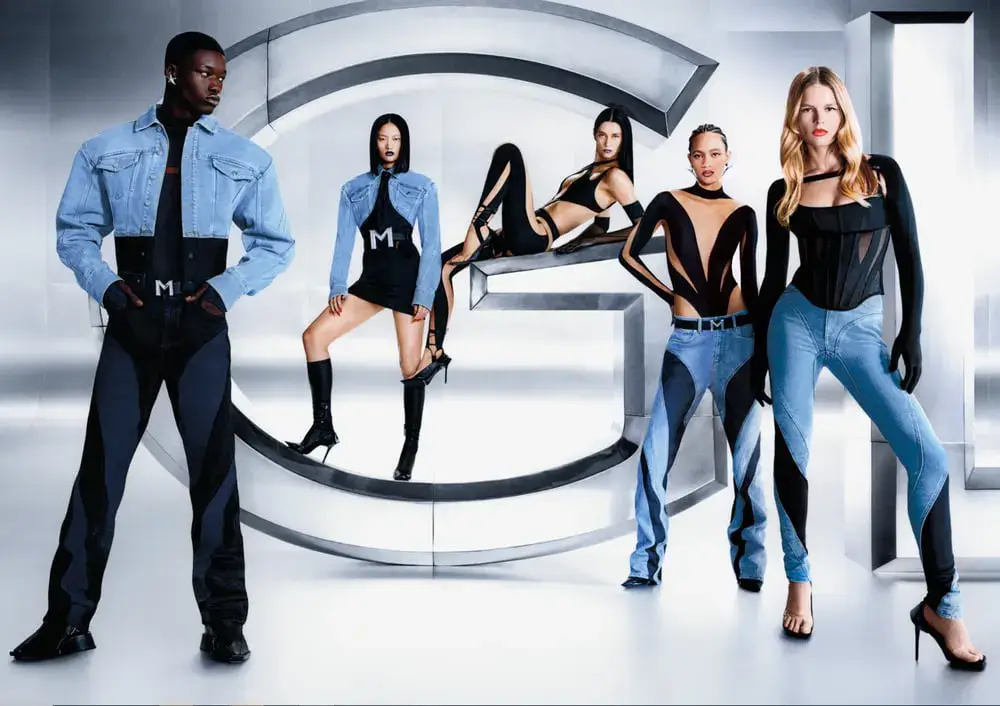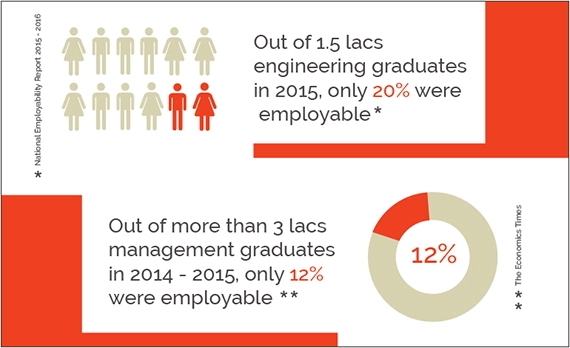Table of contents
- What is Fashion Communication?
- Why Brand Visibility Matters?
- Checklist To Crafting a Powerful Brand Story
- Checklist to a Effective Fashion Communication Campaign
- 5 Fashion Success Stories That Used Fashion Communication Effectively

Remember that ad you saw yesterday? The one with that chic handbag or oh-those must-have pair of sneakers. This is all part of fashion communication campaigns, and they're everywhere—billboards, Instagram stories, news articles and more! These campaigns, whether big or small, influence us. They might subtly encourage us to buy a handbag we've been eyeing or lead us to a pair of footwear we genuinely need. Sometimes, we end up getting both. But what’s more interesting is analysing how brands pull it off? How do they make sure everyone knows and craves their stuff? For fashion brands, it's imperative to integrate style with strategy. This approach must harmonise with the brand's identity while producing measurable outcomes.
Now, let's dive in to learn more.
What is Fashion Communication?
Fashion communication is a multidisciplinary field where messages and ideas about fashion are conveyed through various mediums, including photography, writing and visual design. It involves creating compelling content to express the essence of fashion, trends, and brands, influencing how people perceive and engage with them. Fashion communication strategically bridges the gap between the fashion industry and the audience, utilising visual and written messaging to convey style, identity and cultural significance. These initiatives play a crucial role in shaping public perception and facilitating a connection between fashion creators and consumers.
Why Brand Visibility Matters?

Today’s marketplaces are hyper-crowded, and advertisements run every minute of the day. Consumers are bombarded with countless choices; hence, brands need to stand out to capture attention. In the fashion industry, brand visibility is the key to audience engagement and regular sales. Here are a few reasons, why fashion communication matters:
- Builds Trust and Credibility: Consumers tend to gravitate towards brands they recognise and trust. A visible brand creates a sense of familiarity and reliability. When customers consistently encounter your brand across various channels—be it social media, online platforms, or traditional media—they are more likely to view your business as trustworthy. Trust is the foundation of any successful customer-business relationship, and brand recognition is the key to building and maintaining that trust.
- Differentiates Your Brand: The internet is saturated with similar products and services. To stand out from the competition, your brand needs to be instantly distinguishable. A strong and consistent brand presence helps create a unique identity for your business. When your brand is easily recognisable and associated with certain values, qualities, or experiences, it sets you apart. It allows your brand to stay top-of-mind when consumers are making decisions regarding purchasing.
- Boosts Customer Engagement: Visibility doesn't just stop at being seen; it includes active engagement with your audience. Social media platforms, websites, and other digital mediums provide opportunities for brands to interact with their target audience. A smart marketing strategy takes advantage of these platforms to sustain meaningful conversations and conversions. Whether it's responding to customer inquiries, sharing valuable content, or participating in online discussions, increased brand recall fosters a sense of community and engagement that goes beyond buyer-and-seller relationships.
- Drives Business Growth: Ultimately, the goal of any business is growth. The visibility of your brand is a direct contributor to business expansion. As more people become aware of your brand, there's a higher likelihood of attracting new customers. Existing customers are more likely to become repeat buyers if they consistently encounter your brand in their daily lives. When your brand becomes ingrained in the minds of consumers, it becomes a go-to choice. This heightened visibility translates into increased sales, a larger market share, and positive brand value.

5 Fashion Success Stories That Used Fashion Communication Effectively
The convergence of creativity, market trends and effective brand strategies plays a pivotal role in catapulting a brand into the limelight. Let's look at five remarkable success stories where brands achieved exceptional visibility through smart fashion communication campaigns. By studying these effective fashion communication campaigns, both aspiring and established fashion brands can gain insights into the brand strategies that can be employed to enhance their visibility.
Jacquemus: A Lavender Tinted Sensation
While Jacquemus had already gained popularity among fashion enthusiasts, the brand soared to widespread recognition following its Fall/Winter 2020 show. Renowned for its summer French chic vibes, Jacquemus took a bold step for its tenth-anniversary fashion show, set against the breathtaking backdrop of southern France's lavender fields. This event seamlessly blended the brand's core aesthetics with a clever digital strategy. The picturesque fashion location and curated set transformed the show into a social media sensation, loading our social media feeds with images of models adorned in breezy, summer attire.

The success of Jacquemus lies in its ability to leverage both traditional and digital avenues. The brand crafted genuine but well-planned hype around the event, turning Jacquemus into a household name. While people may not always recall the brand's name, they remember the energy and the imagery associated with those sunny lavender fields, illustrating the power of authentic communication in building brand recognition. By capitalising on the power of Instagram and other visual-centric platforms, Jacquemus successfully engaged with a global audience. This use of the core brand aesthetic in a viral moment leveraged digital media and social platforms for widespread visibility.
Valentino: Pink Mania
Valentino orchestrated a pink revolution with its Fall/Winter 2022 collection. The creative director Pierpaolo Piccioli chose to showcase 40 diverse silhouette-driven looks in a bold, hot pink shade. While Valentino has done monochrome collections before, this was a very clever marketing move. This marked a strategic divergence from the brand's traditional red, a symbol of its legacy. Collaborating with Pantone, Valentino created a custom shade, Pink PP by Valentino—establishing it as a signature colour in the brand's identity.
The success of Valentino Pink goes beyond the runway. Intense PR activities and extensive social media coverage pushed the colour into a cultural phenomenon, making it impossible to ignore. The colour not only dominated a season but also influenced other brands' runways. Pink became a symbol of Valentino, proving that niche yet well-executed fashion marketing campaigns can define a brand's identity.

Mugler: Planned Reinvention
Mugler, a name synonymous with bold, avant-garde fashion, faced a period of transition after its founder, Manfred Thierry Mugler, stepped down in the early 2000s. For over 15 years, the brand navigated a series of creative directors, each exploring and reinterpreting the Mugler legacy.
Then, in 2017, Casey Cadwallader arrived, injecting a fresh vision. His arrival coincided with the brand's acquisition by L'Oréal in 2020, marking a new chapter. Cadwallader's debut Spring/Summer 2020 collection signalled a rebrand, each subsequent collection building upon the last. This culminated in the critically acclaimed Spring/Summer 2024 collection, cementing Mugler's triumphant return to the global stage, highlighting effective positioning and brand awareness.

The brand found a sweet spot between social media attention and tangible results, effectively translating online brand reach into real-world impact by implementing a comprehensive and detailed plan over multiple seasons. Mugler's growth can be attributed to impactful communication toward brand building. From increased show budgets to amplified celebrity involvement, every aspect of the communication strategy aimed for consistency in aesthetics and clothing.
The brand carved a niche in the Gen Z market while honouring its legacy, showcasing a commitment to building a brand beyond clothing. The brand presence of Mugler demonstrates the effectiveness of a multi-faceted approach to fashion communication. This success story exemplifies the importance of aligning brand strategies with industry trends and timely capitalising on growth opportunities.
Gaurav Gupta: Global Ventures
Visionary Indian designer Gaurav Gupta celebrated a remarkable year with his 'Shunya' collection at Paris Haute Couture Week. Over the course of 18 years, Gupta honed his craft, debuting at Indian Fashion Week in 2006. His journey to international acclaim involved a game plan, including a debut ready-to-wear collection available on international e-commerce platforms and prestigious stores like Neiman Marcus and Bergdorf Goodman. The designer's strategic approach to reshaping perceptions of Indian fashion involved blending traditional Indian craftsmanship with modern aesthetics.

Gupta's rise to fame is a testament to the strong fundamentals of fashion communication. Hema Bose, founder of Maison Bose, played a crucial role in facilitating collaborations with high-profile clients, establishing the brand's global presence. From iconic red carpet events to enthusiastic social media coverage, the brand strategically utilised various channels to maximise visibility. Appearances by mega-global celebrities like Beyonce, Cardi B, Shakira, Megan Thee Stallion, Aishwarya Rai Bachchan, Lizzo, and many, has further strengthened Gupta's position in the global fashion landscape. Gaurav Gupta's success story underscores the importance of a well-rounded approach to fashion communication with the right partners.
Karl Lagerfeld x H&M: Massy Chic
In 2004, Karl Lagerfeld's collaboration with H&M marked a groundbreaking moment in luxury-fast fashion partnerships. Lagerfeld was the epitome of high fashion; the German designer known for his transformative impact on Chanel, Fendi & Chloe as well as his namesake label, left an unmatchable iconic legacy. The campaign, although created in a pre-social media era, demonstrated the timeless principles of effective communication.
The commercial cleverly addressed the elitist nature of French fashion, juxtaposing luxury with mass-produced items. Lagerfeld's self-awareness and clear communication with consumers set the stage for future collaborations, establishing a benchmark for high fashion and fast-fashion unions. The success of Karl Lagerfeld x H&M lies in its simplicity and effectiveness. The commercial, layered with suspense, drama, storytelling, authenticity, and humour, resonated with consumers, leading to a swift sell-out.
While Lagerfeld's personal style and industry stature were already well known, the collaboration heightened that feeling and message. This partnership set the benchmark for future collaborations, emphasising the power of the right message to bring high fashion and the masses together. This remains a classic example of how strategic communication can bridge the gap between high-end and mass-market fashion. Lagerfeld's collaboration with H&M not only achieved commercial success but also paved the way for future collaborations between high-end designers and fast-fashion retailers.

Today, where visual communication dominates, these fashion success stories serve as inspiration for brands and designers seeking to navigate the industry. These narratives reveal the strategic decisions and creative endeavours that propel fashion brands into the spotlight.
One thing is clear: the brands that understand the power of storytelling and can connect with their audience on a deeper level will be the ones who ultimately thrive.
These success stories demonstrate the transformative power of communication in elevating brand visibility in the fashion industry. Whether through curated design choices, comprehensive brand building, or strategic collaborations, these brands have navigated the industry with finesse. Their stories serve as inspirations for aspiring designers and established brands alike, emphasising the importance of a dynamic and deliberate approach to fashion marketing.
Checklist To Crafting a Powerful Brand Story
-
Know Your Roots:
What is the history of your brand? What are the values that underpin your ethos? Unearthing your brand's DNA is the first step to crafting a compelling narrative. - Define Your Identity:
Who are you, and what do you stand for? What makes you different from the competition? A clear brand identity is essential for creating a story that resonates with your target audience. - Find Your Voice:
How do you want to communicate with your audience? Do you want to be playful and irreverent, or sophisticated and elegant? Finding your brand voice will ensure your story is delivered in a way that aligns with your overall image. - Show, Don't Tell:
Don't just tell your audience your story; show them. Use visuals, experiences, and interactive elements to bring your narrative to life.
Checklist to a Effective Fashion Communication Campaign
A successful campaign is a result of a well-thought-out and executed plan. Here are some essential steps to creating a successful campaign:

- Define Your Objectives:
Clearly outline the goals of your fashion marketing activity. Are you aiming to increase brand awareness, promote a specific product, or engage with a new audience? Clearly defined objectives will serve as the foundation for your entire campaign. - Know Your Target Audience:
Understand your target demographic's preferences, lifestyle, and habits. Tailor your campaign to resonate with their interests and values. This will inform your messaging, visuals, and channels. A compelling story will emotionally engage your audience and set your brand apart. - Craft Your Message:
Develop a compelling and concise message that reflects your brand identity and aligns with your campaign objectives. Your message should evoke emotions and convey a clear value proposition. - Create Visual Content:
Visual content is at the heart of fashion. Establish a consistent visual identity across all platforms, from your website and social media to marketing materials. This includes your logo, colour palette, and photography style. Consistency helps build brand recognition and fosters a sense of trust and reliability. - Choose Marketing Channels:
Select the most appropriate channels to reach your target audience. This could include social media platforms, print publications, websites, or even physical spaces like pop-up shops. Each channel should complement the others for a unified campaign. - Launch Your Campaign:
Implement a well-coordinated launch campaign to generate buzz and interest. Utilise paid and organic marketing and reach optimisation strategies. - Measure and Analyse:
Use analytics tools to measure the success of your campaign. Track metrics such as engagement, reach and conversion rates. Analysing the data will help you understand what worked well and what can be improved in future campaigns. - Adjust and Optimise:
Based on the analytics, make adjustments to your campaign strategy. Identify successful elements and incorporate them into future campaigns. Continuously optimise your approach based on feedback and results. - Evaluate ROI:
Assess the return on investment (ROI) of your campaign. Determine whether the objectives were met and if the campaign contributed to the overall success of your brand.

A successful campaign is a harmonious blend of creativity, strategy and adaptability. As the industry continues to evolve, these fashion success stories serve as inspirations for aspiring designers and established brands alike, emphasising the importance of a dynamic and strategic approach to business strategies.
The transformative power of effective fashion marketing remains constant, showcasing its pivotal role in elevating brand awareness and creating lasting connections with audiences.
Read More About Fashion Communication
- Did you find this piece interesting? If you’re looking to carve a niche for yourself in the industry of fashion communication, here’s a curated list of 10 career options in Fashion Communication that might be of interest to you.
- Here’s another read about fashion communications as a career might help you compare and enhance your understanding.
- If you’re confused between fashion design and fashion communication, then read this article to get better clarity.
- Express yourself and inspire others through this guide to fulfilling career options and their scope in the field of Fashion Communication.





